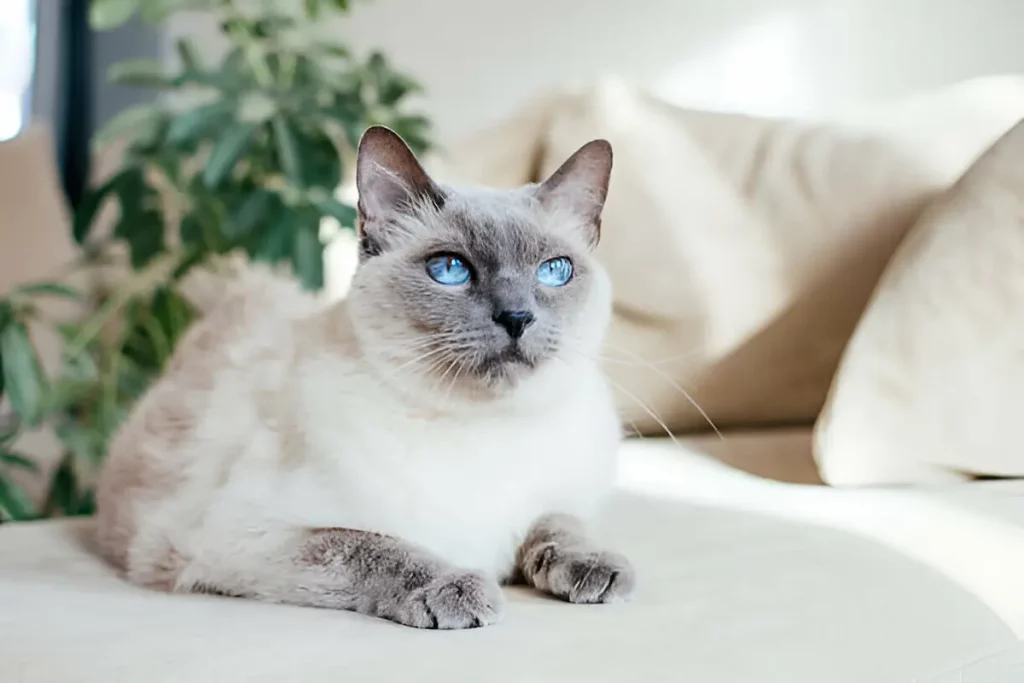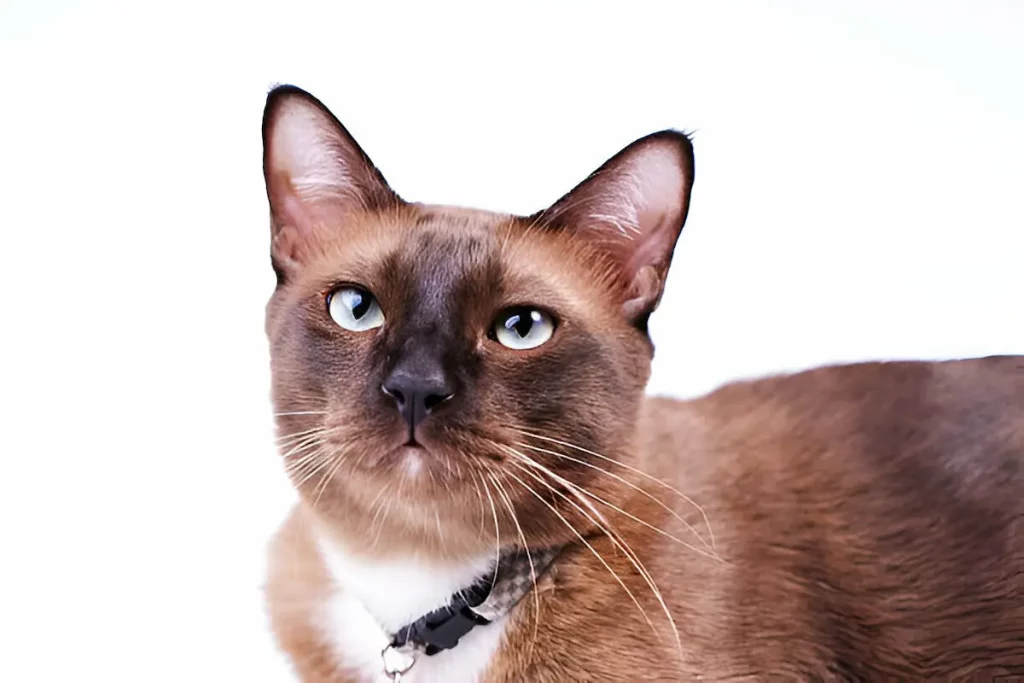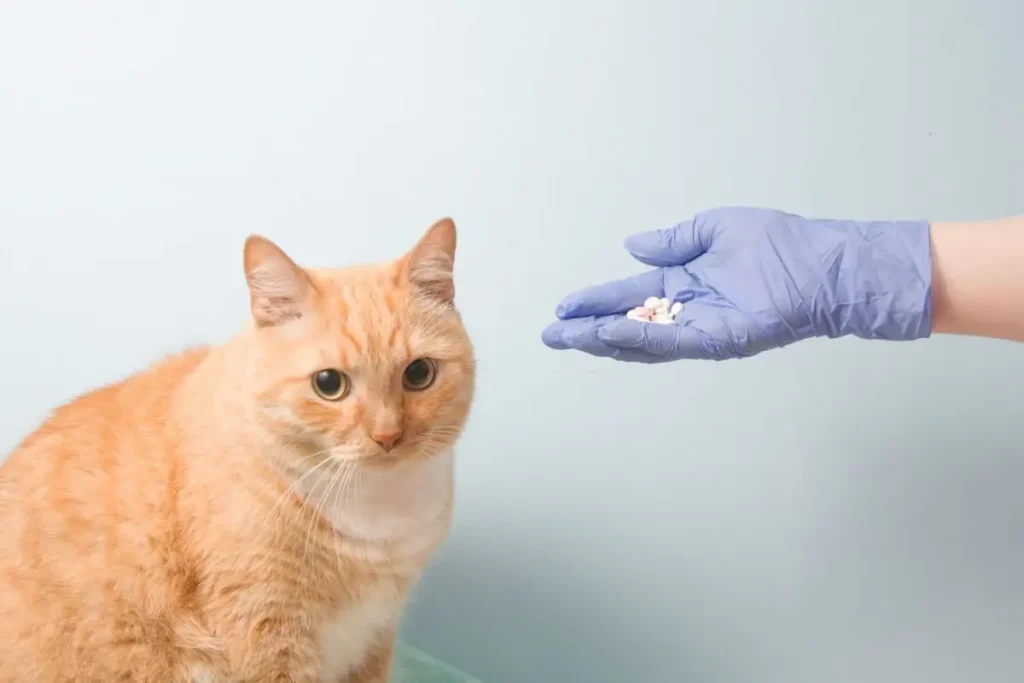Of all the beautiful cat breeds in the world, the Blue Point Siamese is a glamorous Superstar among cat lovers. Their beautiful fur patterns and colors make them wonderful companions, but they are as affectionate as they are adorable.
Now don’t get confused and assume that this Siamese breed is actually blue. In fact, their eyes are usually a piercing blue, but the name Blue Point comes from their fur and color to distinguish them from other Siamese cat species.
Maybe you’re looking to adopt one of these cute kittens or you’re simply curious about one of the most popular cat breeds in the world. If so, read on to learn more about the Blue Point Siamese…
Fascinating facts about Blue Point Siamese cats

The Blue Point Siamese is best known for its blue-gray fur on the face, paws, and tip of the tail, which contrasts with the underlying white fur that covers the rest of the body. These cats are very affectionate and talkative Soci, but they can also be very demanding, which means there is a lot to know before bringing a cat home.
1. History and Popularity
Siamese cats are generally believed to have originated from the Kingdom of Siam as early as 1350, a region they now know as Thailand. Their first encounter with the Western world did not take place until 1890 when their unique appearance made a big impression.
The breed was not officially recognized by the International Cat Association until 1934 and has since become an international sensation, although it has come at a high cost.
2. Siamese Blue Point Physical Characteristics
There is a slight difference between the older, traditional Siamese cats and the more modern breeds. As modern Siamese cats are easier to find these days, it is their characteristics which are the most recognizable.
In addition to their blue-gray Pointed markings, blue-pointed Siamese cats have an elongated, slender body with triangular heads. Their best-known features are their almond-shaped eyes and large ears.
Most purebred Siamese cats have short hair, although there are also some cases where longer-haired Siamese cats occur.
3. Blue Point Siamese Kittens Are Completely White At Birth
The most interesting thing about the Siamese breed is the coat patterns and colors. These cats actually have temperature-sensitive albinism, so their coat is like a living heat map that changes color over time depending on which parts of the body are coldest.
This is why their extremities, such as their face, legs, and tail, often turn darker colors as they age, such as bluish-gray, while the rest of their body remains white. At birth, they are completely white, as it is always warm in the womb and therefore their coat remains pale.
You’ll usually be able to see the color on their points from 6-8 weeks after birth.
4. The Blue Point Siamese Cat Is One of Four Official Siamese Types
The Blue Point Siamese is one of the rarer breeds in the Siamese family, with the most common breed is the Seal Point Siamese. This Siamese cat’s color has dark brown markings on a fawn body instead of the gray and white of the blue point cats.
The other types are even rarer for their special coloring. The Chocolate Point Siamese is closer to the seal point in that their markings are also brown, although these are paler in color and their bodies are usually cream-colored.
Another pretty, and even rarer, type is the Lilac Point Siamese. Their fur markings are not exactly purple, but there is a slight pinkish tinge to their gray point markings on their white body. Luckily, their fur color and coat pattern have no effect on their temperament, so all Siamese cats roughly behave the same.
5. Blue Point Siamese Cat Prices
While there is not really a fixed price on these beauties, as every breeder will price them differently, you can expect to pay a hefty fee for one of them. This is especially true if you’re looking for a purebred.
You can expect to pay anywhere between $500 – $1500 for these kitties, and thankfully you will not struggle too hard to find a breeder for this very in-demand cat. I’d suggest not just settling for the cheapest option from just any breeder, at least not without some thorough questioning that they should be more than willing to provide.
Sometimes, you will come across a breeder who is not taking appropriate care of a litter and is just trying to make a quick buck. Buying kittens from these breeders often means buying a diseased or malnourished Blue Point Siamese kitten. It doesn’t always happen, but it can, so always come prepared with a lot of questions when meeting with breeders.
6. Blue Point Siamese Personality
While all cats develop their own kind of personalities, the temperament for a Blue Point Siamese, and indeed for all Siamese, is pretty consistent. Despite their regal appearance, they are incredibly friendly, highly affectionate, and very playful cats.
In fact, this blue point cat is one of the best family cat breeds to bring into your home. Their love of affection and constant need for company makes them a great addition to large families as they love to socialize with anyone, even dogs under the right circumstances.
7. Blue Siamese Cats Can Get Quite Chatty
One of the things that these loveable furballs are known for the most is their impressive, and insistent, vocal range. To these babies it does not matter that humans and cats don’t speak the same language, they will still spend most of the day chatting your ear off.
In fact, they consistently meow at you until you acknowledge them, and might even get louder if you try to ignore them. These cats love to be social and expect you to speak back to them regardless of what is said.
It’s not wrong to wonder why Siamese cats meow so much, but if you prefer your cat to be calm, then these cats are not for you.
8. Blue Point Siamese cats can experience separation anxiety
The disadvantage of such a gentle and affectionate cat is that he does not like to be left alone for too long. This is not only due to the fact that this breed is particularly reliant on humans, they are also very social animals by nature and are not immune to developing depression through loneliness.
If you or your family tend to leave the house for long periods of time, I would not recommend bringing home Siamese cats, but especially a Blue Point. These animals need constant care and attention and are not afraid to demand it. Therefore, they deserve to be with families who can spend a lot of time with their furry friends.
9. Feeding and Dietary Requirements for the Blue Point Siamese
Unfortunately, due to the careful breeding process of these beautiful animals, their pedigree, often created by inbreeding, can place high demands on their daily lives. One of these requirements concerns their nutrition.
Blue Siamese cats often have a higher risk of developing food allergies and are more sensitive than other cats. The safest way to feed them and possibly screen for appetite stimulators is to give them grain-free foods or foods with a single source of protein.
Another great way to find a healthy diet for your kitten is to have him weighed and consult your vet about the best course of action.
10. Energy and Exercise
Blue Point Siamese cats are almost related to dogs in many ways. One of these reasons is that they are quite active and need a lot of active stimulation to pair with their strong intelligence.
So, in addition to having a constant friend (whether it’s another cat or a human friend), you should also get plenty of cat toys. Their hunting skills are not as pronounced as other cat breeds, but they still hunt for things like laser dots or toys attached to strings.
I highly recommend filling your home with as many stimulating activities as possible and keeping your cat from running outside. This is both for your protection from things like traffic and the threat of thieves, as these babies are a nice and expensive deal.
11. Blue Point Cat Breeds Can Be Trained
Like other members of the Siamese family, the Blue Point breed can also be trained. Training is actually a great way to stimulate them and, moreover, an effective way to create a bond with your furry friend.
By now, most cat lovers know that, with few exceptions, cats always do what they want. But it’s not impossible. The Blue Point Siamese loves games of fetch and a great trick for cats is always treat, positive reinforcement, and repetition.
12. take care of your Blue Point Siamese cat
Thanks to its mostly short fur, grooming this cat is economical and does not have to be done too frequently. A good weekly brush with a Steel tooth comb will help remove dead or knotted hair, and if you feel like it, you can brush your teeth two or three times a week to keep your smile pearly white and frosty.
Nails should also be trimmed occasionally so that they do not become too long. A scratching post is great for maintaining nail growth, but it makes sense to check it from time to time. You should take care of them already in the kitten period so that they can get used to the process.
13. Blue Point Siamese Cats Are Prone to PRA
Progressive retinal atrophy (PRA) is an unfortunately common condition in Siamese cats that persists despite all breeders’ efforts to eradicate it. The blue spot’s eye condition is generally worse than other cat breeds, especially at night, and it often suffers from many eye disorders such as PRA.
This genetic condition causes a gradual deterioration of the retina, which after a while can lead to blindness. You should ensure that your kitten and her parents undergo PRA Screening to reduce extreme cases.
Final Thoughts: Blue Point Siamese
You know you don’t need all this guidance to convince you what special creatures these cats are, but the more you know, the better. This gray Siamese cat is loved not only for its smooth fur and beautiful eyes.
Whether you are charmed by their constant affection, fascinated by their talkative behavior, or simply happy to have such a loyal and lovable companion, the Blue Point Siamese is a true gift. No wonder they’ve been around for so long, we can’t get enough of them or the other blue-eyed cat breeds.
Amanda founded and owns The Discerning Cat. A lifelong cat lover, she is the proud mother of two Siberian cats Alexei and Vladimir. Their passion lies in understanding cats and different cat breeds.
FAQs
Are Blue Point Siamese cats hypoallergenic?
While no cat breed is completely hypoallergenic, some people with allergies may find that they are less allergic to Blue Point Siamese cats.
Do Blue Point Siamese cats require special grooming?
Blue Point Siamese cats have short coats that require minimal grooming. Regular brushing can help to reduce shedding and keep their coat looking its best.
How often should I take my Blue Point Siamese cat to the vet?
Blue Point Siamese cats should see a veterinarian at least once a year for a routine check-up and vaccinations. They may require more frequent visits as they age or if they develop health issues.
Are Blue Point Siamese cats suitable for families with children?
Blue Point Siamese cats are generally good with children and can make excellent family pets. However, they may not tolerate rough handling, so it is important to supervise interactions between children and cats.
Do Blue Point Siamese cats have any unique dietary requirements?
Blue Point Siamese cats do not have any specific dietary requirements, but they do benefit from a balanced diet that is appropriate for their age, size, and activity level. It is important to provide them with high-quality cat food and plenty of fresh water.


